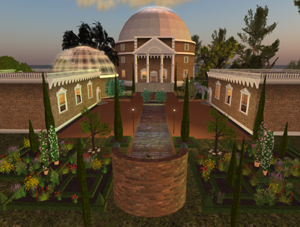Perhaps the most important decision you’ll be making about your project is your choice of learning environment (s). Your virtual learning environment (VLE) may be holistically encompassed in one platform (such as a course management system), a combination of platforms (such as a Moodle/Mahara integration), or a mashup drawing from multiple tools, applications, and spaces. In addition, if your project design includes a hybrid, blended, or residential component, the environment may include “on ground” physical spaces.

Environments, by default, constrain choices. It’s important to design learning that is driven by the needs of the learner and instructional goals, and not by the affordances of the tools at your disposition. This is why you should conceptualize your project, choose learning goals, select your readings, and think about instructional methods and theoretical framework before you target your final environmental selection. As you investigate your short list of choices, you should keep in mind the ethical considerations raised earlier in this section. Make sure that any tools, applications and environments that you select for inclusion in your project pass the ethics test.
When possible, choose open source applications for your environment. This makes sense for several reasons, such as:
- It’s fiscally feasible – they are free
- Most open source applications easily pass the ethics test. You still need to run them through the test, though!
- You may download and install them yourself, to your system, website, or server
- If you download and install them – you will usually have complete control over the environment
- They generally have robust, sustained, supportive communities who will help you get started
- Most open source communities provide ongoing, superb support resources, at no cost.
- Once you have downloaded an open source application to your own computer or server, you won’t have to worry about the terms of service or policies suddenly changing.
- If it’s downloaded to your system or server, you won’t lose access to your work if the application gets bought out or disappears.
Note: Make sure you access open source applications via their official .org website and not .com or other possible runoffs of their work. The latter may be legitimate to the .org, or may be something created for profit by someone “profiting from” the open source designation. This is usually legal but not always ethical.
When selecting a learning environment, you’ll probably want to choose one that has a fairly good track record for support and sustainability. In other words – that they have been around long enough to have an active, growing user base, and that the programming team continues to support and develop the platform or application. This doesn’t mean you should shy away from experimenting with truly emergent technologies and applications. However, it’s always best to do very small “pilots” at first with untested environments, with the plan to develop and grow in scale as the platform evolves and you have had a chance to analyze its affordances with the help of pioneering participants who are willing to share the risks of being in a cutting edge space. In my experience, most of these environments often “evaporate” after short periods of time, with the strongest and fittest remaining to take a place among the tried and true. My advice would be to choose a robust, sustained environment if you are planning a project designed for more than 20 learners. Feel free to experiment with the riskier choices if your project includes a small group of early adopters of emerging technologies (such as your MALET peers).
Some examples of robust, well maintained open source environments include:
Moodle A robust learning management system.
Mahara An ePortfolio platform with social networking and blogging features.
Elgg. Elgg is a social media application very similar to Facebook. I created a very user friendly learning environment using Elgg. It’s easy to install and configure.
Open Sim Virtual Worlds. You have many options here, from downloading your own “sim on a stick” to creating a Diva Distro 4 region setup, to renting space on an existing region. You’ll find more information on this option in MALET resources on virtual worlds.
WordPress. Best know as a blogging platform, WordPress is a powerful and robust content creation suite.
Joomla –is an excellent content management system. It’s a little more complex than WordPress, Moodle, or Elgg at the setup stage, but very easy to maintain and manage once you have figured out the settings.
Drupal is another powerful content management platform. It is quite complex to set up, and used in many professional settings.
MediaWiki – a powerful wiki platform.
There are also a number of excellent open source discussion forum platforms. Here is a link describing several of those options: http://webtecker.com/2008/05/02/8-popular-open-source-forums/
You may also want to consider creating a mobile learning project with mobile applications. My section on Studies In Mobile Media should help you get started on that.
Learning Environments by Nicola Marae Allain, PhD is licensed under a Creative Commons Attribution-NonCommercial-ShareAlike 3.0 Unported License.